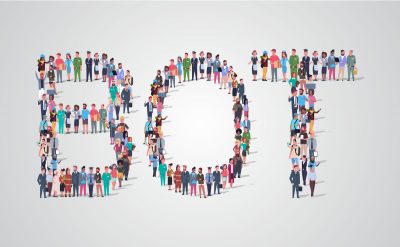Highlights
- As a result of technological advancements and big data, search engines can now filter and classify content, allowing consumers to avoid going through all websites.
- Chatbots are the next wave of technology geared to assist in a more personalized search in a conversational style.
As per reports, in 2021, 76% of shoppers interacted with chatbots, up from 51% in 2020. Love them or hate them, chatbots are here to stay. The fact is that as chatbot technology continues to mature, user interactions with chatbots will become more commonplace, and this potential could bring big changes to how we search for answers online.
Search engines have been around longer than chatbots, and in the beginning, their capabilities were rather limited. Though the search engines today are far more advanced and can process thousands of queries in seconds, consumers can still not find the exact answers they are looking for. This is where content providers can seize the opportunity and tailor and customize content to match exactly what consumers are searching for.
Advances in Artificial Intelligence (AI) and Natural Language Processing (NLP) have enabled chatbots to have almost human-like conversations with customers. Similarities between chatbots and search engines are growing as both have similar capabilities. So, is there any chance that chatbots will eventually replace search engines? Here are some facts about chatbots and search engines that will answer this pertinent question.
Chatbot vs search engines: What’s the difference
The main difference between chatbots and search engines is in their memory range. Chatbots have long-term, persistent memory, while search engines are equipped with only short-term memory to provide results. The capability of chatbots to draw from historical interactions enable them to provide more accurate and personalized results. Search engines do not function in this manner, and therefore their results are not nearly as personalized as those of chatbots. But they can provide results based on previous searches.
Search engines use a web crawler, an engine bot that crawls the internet to index content on a search engine results page with other links to relevant content. The responsibility to rank content lies with the business content creators to reach their target audience. Once a query is made, results appear on the Search Engine Results Page (SERP), and the user has to choose the results closest to answering their query. Search engines use this click-through rate to determine how to update the algorithm in the future so that more relevant answers are provided at the top of the results.
Search engines have advanced considerably over the recent decades, and besides understanding the user’s intent, they can also comprehend the textual meaning of a query. They also provide featured snippets, including videos and information cards, so that users can read results without clicking on all the links.
On the other hand, chatbots use AI neural networks, NLP, audio, video, and media processing to pass information to users. Historically, chatbots were text-based and programmed to streamline customer service operations workflows. They functioned more like interactive FAQs. While they worked well for a certain set of questions on which they were trained, they failed when faced with complex questions. Today, chatbots are integrated with more rules and NLP and, hence, have become used for both consumer and business interactions. They can now provide a better user experience, productivity, and efficiency to enterprise communications for business. Chatbots can complete a task for a customer without interacting with a human, which provides efficiency, and improve customer experiences and engagement without requiring an employee.
But above these, the chief advantage of chatbots is that they can provide more accurate, personalized results. Businesses with proper conversational design practices can gather information from their customers, improve the sales or service messaging accuracy, and use copywriting language that converts.
chatbots have been playing a vital role for businesses, helping them in cost reduction, resource optimization, and service automation – they have a long way to go. Yet, they are still in the developmental stage. For that matter, customer service employees are still required. Also, not every company can afford to create a chatbot from scratch because NLP is still a complex technology. Chatbots also require constant maintenance to be effective.
Importance of intelligent applications
Customers can often have the best experience if they avoid the complex navigation menu and their answers are handed to them from a single place, which is why intelligent question-answering search engines are the best choice. Intelligent search applications can help search any document or website and add a search box on the website. These applications can also easily be integrated into chatbots using ML algorithms and can help chatbots handle the questions that they don’t already know the answers to. Some intelligent search applications can even route messages, suggest responses, and assist first and second-line agents by searching the knowledge database. By reducing the number of common questions in the call center, agents can focus on solving more challenging issues.
Can search engines and chatbots work together?
Considering the capabilities of both chatbots and search engines, it is safe to infer that one cannot replace the other. Best results can be derived when intelligent search and chatbot platforms are interwoven. They provide a better information circulation environment that helps users quickly and efficiently find their needs. This can be achieved through searching via a chat interface, which has gained traction because it provides tailored content that considers more individual preferences and considerations.
Home automation, smart cars, and IoT are a few examples of the technological revolution combining search and chat.
The future of search engines and chatbots
There has been a generational shift in the current consumers using chatbots and other user messaging platforms, which in turn provides more information and insight for these technologies to improve. The capacity to develop a high-caliber chatbot that is viable and transcends across different platforms to answer queries on a broad knowledge base of topics effectively and efficiently will be the most crucial step in transitioning users from search engines to chatbots.









